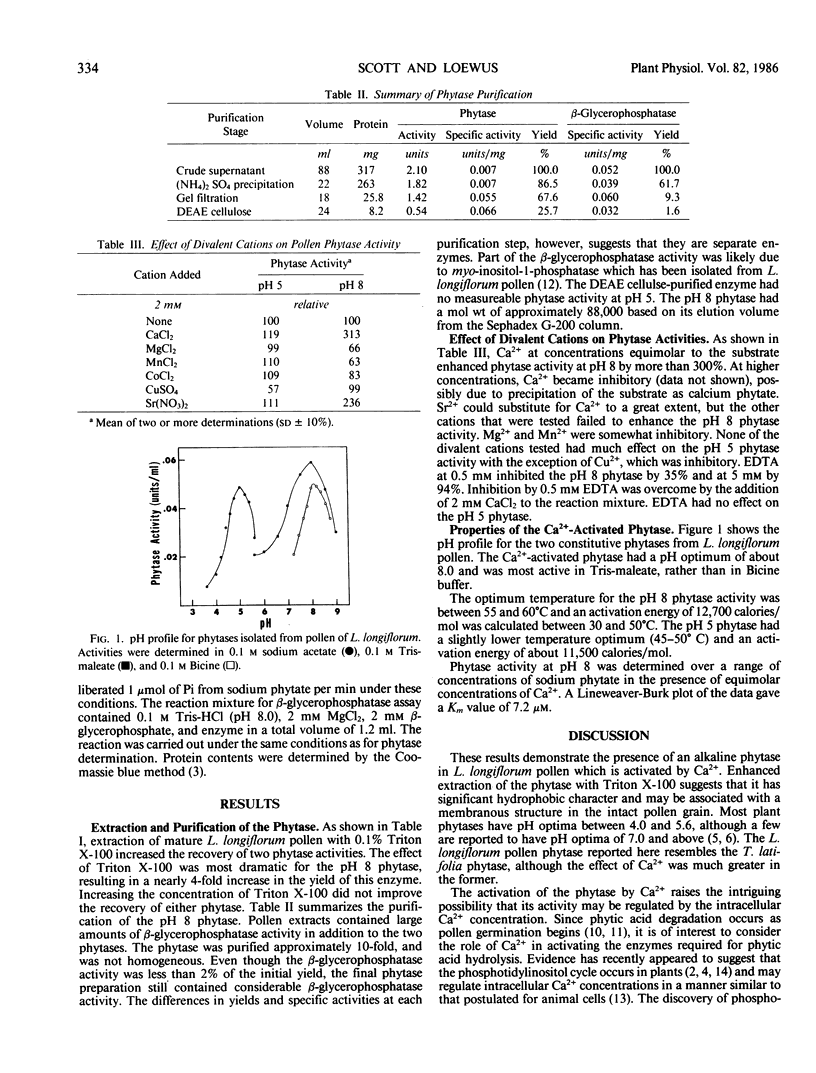Abstract
A phytase was isolated and partially purified from the pollen of Lilium longiflorum Thumb. Optimum activity was at pH 8.0. The phytase was activated by Ca2+ and Sr2+ but not by the other divalent cations tested. Activity was inhibited by ethylenediaminetetraacetate. The phytase had a temperature optimum of 55 to 60°C and an activation energy of about 12,700 calories/mole. Extraction of L. longiflorum pollen with 0.1% Triton X-100 increased recovery of the phytase by nearly 4-fold. The phytase had a molecular weight of about 88,000 as determined by gel filtration chromatography and a Km value of 7.2 micromolar for phytic acid in the presence of Ca2+.
Full text
PDF


Selected References
These references are in PubMed. This may not be the complete list of references from this article.
- Boss W. F., Massel M. O. Polyphosphoinositides are present in plant tissue culture cells. Biochem Biophys Res Commun. 1985 Nov 15;132(3):1018–1023. doi: 10.1016/0006-291x(85)91908-4. [DOI] [PubMed] [Google Scholar]
- Bradford M. M. A rapid and sensitive method for the quantitation of microgram quantities of protein utilizing the principle of protein-dye binding. Anal Biochem. 1976 May 7;72:248–254. doi: 10.1016/0003-2697(76)90527-3. [DOI] [PubMed] [Google Scholar]
- Loewus M. W., Loewus F. A. myo-Inositol-1-Phosphatase from the Pollen of Lilium longiflorum Thunb. Plant Physiol. 1982 Sep;70(3):765–770. doi: 10.1104/pp.70.3.765. [DOI] [PMC free article] [PubMed] [Google Scholar]
- Marx J. L. The polyphosphoinositides revisited. Science. 1985 Apr 19;228(4697):312–313. doi: 10.1126/science.2984769. [DOI] [PubMed] [Google Scholar]


